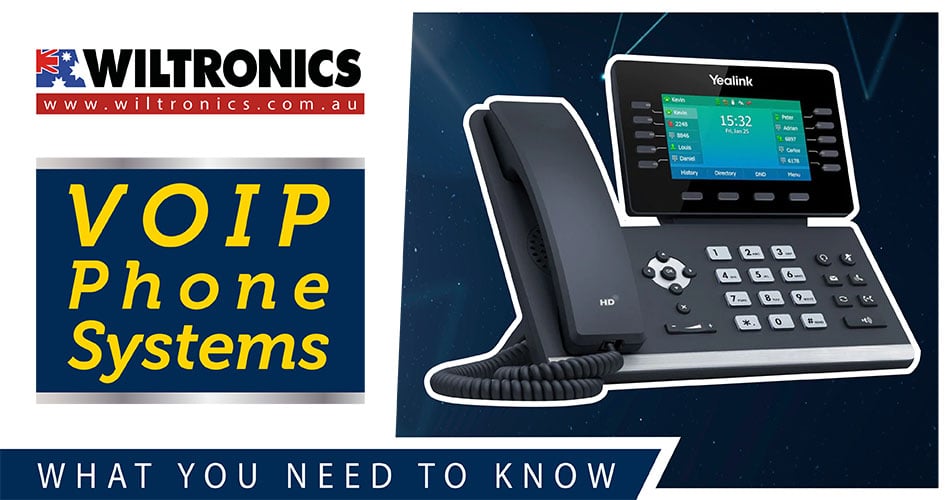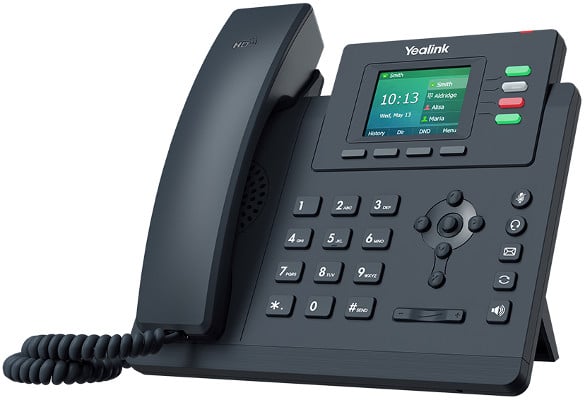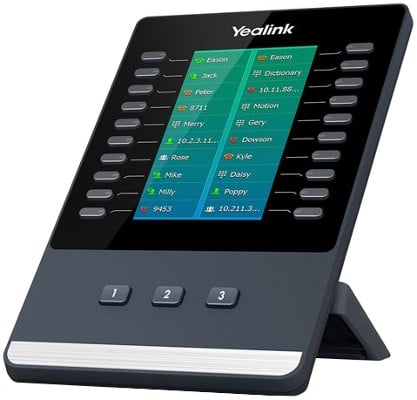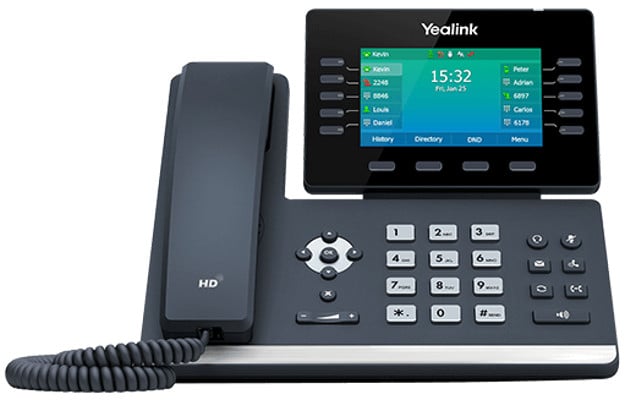VoIP Phone Systems: What You Need to Know
May 24, 2022

VoIP phone systems have changed the way we communicate.
By now, you may have heard about VoIP phone systems. But have you ever wondered how they differ from the traditional ones?
In this post, we will explain all the ins and outs of this internet phone service and help you make the most of it.
What Does VoIP Mean?
VoIP is short for Voice over Internet Protocol. It is a process that makes it possible to send voice messages over the Internet.
Voice over IP converts your voice into a digital signal, compresses it, and sends it through the internet. On the receiving end, the digital data is then uncompressed into the sound. The service provider sets up the call between all participants.
Developed in 1995, VoIP has evolved to become more stable and reliable with broadband development. Today, it’s the go-to solution for many businesses when it comes to phone systems.
With VoIP, they can make phone calls without any telephone service – as long as they have internet access. This also saves them on long-distance charges.
How Does a VoIP Phone System Work?
A VoIP phone system is technology that allows users to make phone calls without using a regular landline. Or even a mobile network.
The server is used to connect calls to other telephone networks. As long as you have a high-speed internet connection, including a router and modem, you are ready to use VoIP.
With its microphone and receiver, it takes the sound you generate and converts it into packets of data. Then, it sends over the network and out through the internet. On the other end, the phone decompresses the data and plays it back for the other person to hear.
And since VoIP runs over the internet, your data is stored securely in the cloud. You can manage the system through an online dashboard. This dashboard allows you to adjust contacts, business phone numbers, and call forwarding.
VoIP vs Traditional Phone Systems
Traditional phone systems use hardware that run the Primary Rate Interface (PRI) on the Integrated Services Digital Network (ISDN). ISDN is a circuit-switched telephone network system that transmits both data and voice over a digital line.
You can also think of it as a set of communication standards to transmit data, voice, and signalling. Further, a PBX system uses traditional phone cables along with a PBX server. With a PBX system, you can have more phones than phone lines, and the calls between users are free.
VoIP phone systems make phone calls less complicated. But there are three varieties of VoIP phones you need to consider.
In an IP PBX setup, calls get routed through VoIP networks, the PSTN system, and vice versa. The servers for IP PBX may be hosted onsite through a telecom provider or an internet service provider. PSTN stands for the ‘Public Switched Telephone Network’. It refers to old-school telephony, in which phones are hooked up to specific networks. Mainly used for landlines.
Next, a virtual VoIP only uses the internet and phone system software. There is no need for desk phones, cables, or any other kind of hardware. You can make or receive calls using a dedicated app on your device like a smartphone, tablet or computer.
Lastly, a hybrid VoIP phone solution uses a PRI phone system in conjunction with IP phones.
Choosing between VoIP and PBX for businesses
If your current PBX setup meets your needs, it may not be cost-effective to change it. Particularly if scaling calling operations is not an issue.
But if the PBX systems limits you to onsite calls, opt for VoIP systems. A VoIP setup can allow you to set up remote workers and distributed teams.
In terms of costs, you will have lower monthly fees for PBX systems. However, you will pay more for cable installation, equipment and maintenance.
With VoIP, you will pay fixed monthly subscription fees, and there is no cost for calls or equipment.
As for availability, it is rare for companies to have PBX systems due to the long term costs. They choose VoIP phone systems for many good reasons. As long as they have a stable internet connection, they can quickly and easily install a phone system.
Why do businesses use VoIP?
VoIP is an ideal solution for reliable phone service in business applications. The flexibility and professional calling features for one low price are a bonus.
Things to Consider Before Purchasing
Thinking about setting up VoIP phone systems in your business? Here are a few of the requirements you need to ensure your business is ready:
1. Network bandwidth
A reliable internet connection is a must. It can be a DSL, cable, or fibre from an Internet Service Provider (ISP).
The standard bandwidth required for a VoIP is 100 Kbps per device. Depending on the type of data and features you use, you might need more bandwidth than the standard.
2. Phones & devices
Another major factor is ensuring that you have the right devices in place. You must have a SIP phone, a softphone (software program for making calls), or an Analogue Telephone Adapter to complete calls over VoIP.
3. The right VoIP service
Partnering with a trustworthy provider guarantees a reliable setup and a pleasant experience. To select the right VoIP service, consider the following factors:
- Initial and monthly costs
- Reliability and uptime
- Availability and quality of customer service
- Longevity and reputation of the company
- Ease of use of the products and services
- Customer reviews and case studies
Looking for the Best VoIP Phone Systems?
Replace your old phone system with one of our best VoIP phone systems. These phone systems provide excellent wireless connectivity.
They have an advanced noise-cancelling microphone and enhanced speakers. Plus, they have excellent audio quality for music, media, and conversations. These fantastic features allow for crystal-clear calls even in noisy offices.
1. Sennheiser SDW 5066 Wireless Headset with Base Station
No longer available
Product code: AC-HS-SPS-SDW5066
The Sennheiser SDW 5066 is a binaural Wireless DECT Headset with a base station. It features triple connectivity for maximum device flexibility:
- Softphone/PC
- Desk phone
- Mobile

2. Yealink T33G 4 Line IP Phone, 320×240 Colour Display
Product code: AC-SIPT33G
An entry-level colour screen IP phone with high performance that supports four lines. It includes local 5-way conferencing and is equipped with a new powerful chip, which greatly improves work efficiency.
Extra features include a dual-port Gigabit Ethernet with integrated PoE.

3. Yealink EXP50 Colour Screen Expansion Module for Yealink T5 Series IP Phones
Product code: AC-IPY-EXP50
Enhance your SIP Phone’s functionality to a whole new level with this unit from Yealink! It features a large 4.3-inch colour-screen LCD that provides a clear visual experience.
Furthermore, it has a simple user interface and advanced call handling capabilities. This unit also allows you to monitor contacts and manage a high volume of calls with ease.
Ideal for receptionists, administrative assistants, and call centre workers.

4. Yealink SIP-T54W, 16 Line IP HD Phone, 4.3″ 480 x 272 Colour Screen
Product code: AC-SIPT54W
An easy-to-use Prime Business Phone specially designed for busy executives and professionals. Featuring an adjustable 4.3-inch colour LCD that lets you find your ideal viewing angle.
The Yealink SIP-T54W IP Phone works with built-in Bluetooth 4.2 and dual-band 2.4G/5G Wi-Fi. Thus ensuring you keep up with modern wireless technologies.
For more, check our wide range of VoIP phone systems.
The Bottom Line
Over the last decade, Internet speeds have increased exponentially. The system gets faster and better all the time, benefiting our daily lives.
And with smooth internal and external communication central to businesses, VoIP phone systems are ideal. For one, VoIP allows people to make phone calls over an Internet connection.
In fact, it is increasingly becoming the golden rule of modern corporate communications. Now that you know what VoIP is, feel free to use this post as a buying guide!
© Electrotech Brands Pty Ltd 2022


Write a Comment
You must be logged in to post a comment.